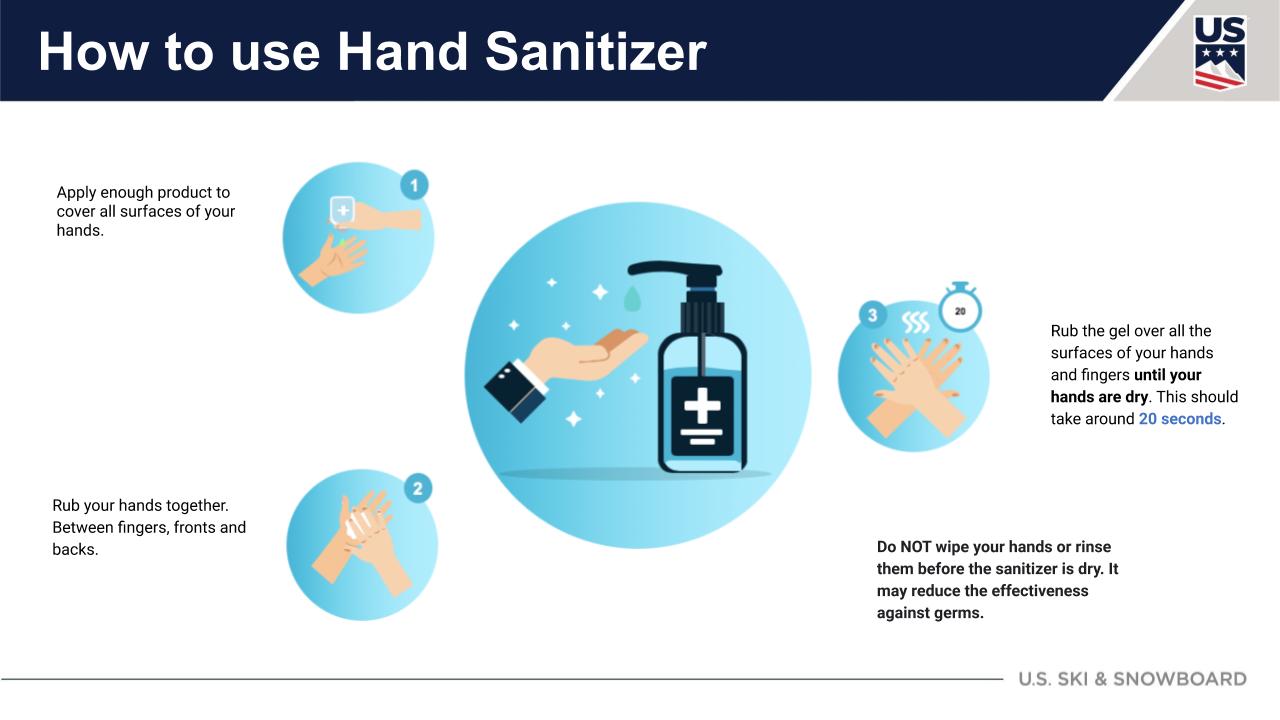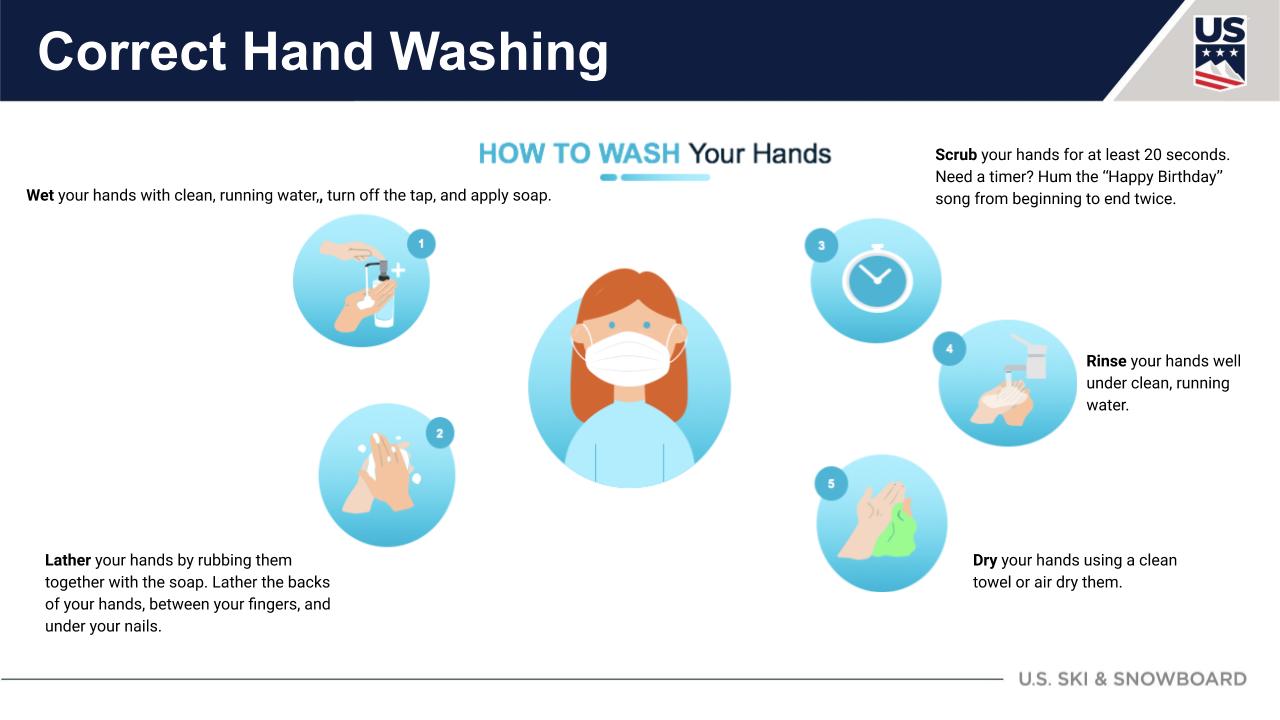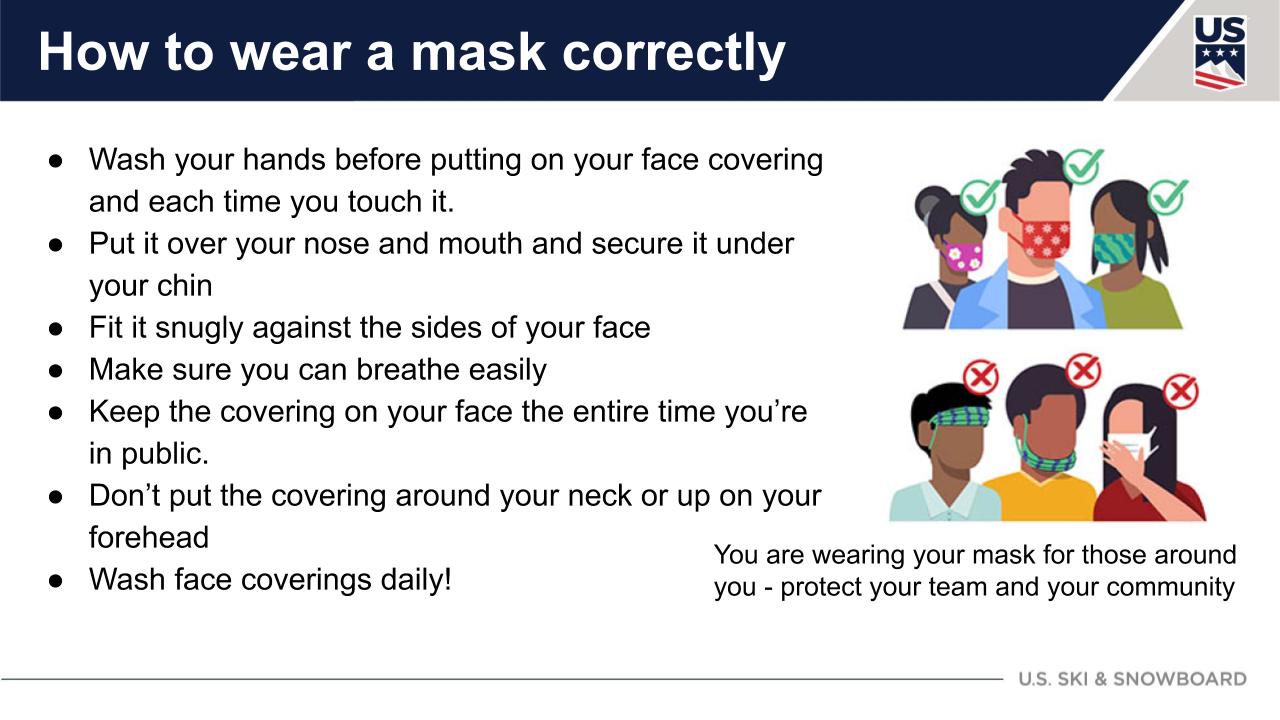
Return to Dryland Training
UPDATED AS OF 8-7-20
U.S. Ski & Snowboard recognizes that COVID-19 has impacted different parts of the country in different ways and with different timing. Since COVID-19 is extremely contagious and is believed to spread mainly from person-to-person contact and can lead to severe illness and death, before making plans to return to on-snow or sport-specific (ie. water ramps and airbags) group training, we recommend you familiarize yourself with local, state and federal public health orders, as well as the USOPC’s return to training considerations and the CDC's considerations for youth sports. As per CDC considerations, the risk of COVID-19 spread increases in youth sports settings as follows:
- Lowest Risk: Performing skill-building drills or conditioning at home, alone or with family members.
- Increasing Risk: Team-based practice.
- More Risk: Within-team competition.
- Even More Risk: Full competition between teams from the same local geographic area.
- Highest Risk: Full competition between teams from different geographic areas.
By following these guidelines, athletes, coaches and parents will be able to make informed decisions as to when return to training can commence. It is safest and the CDC recommends that you do not gather, travel or stay in overnight accommodations wherever and whenever possible as travel increases your chances of getting and spreading COVID-19.
If you live in a community where stay-at-home or shelter-in-place orders have been lifted or modified, then training can be a great opportunity for you to relieve stress and provide much-needed exercise. Because training may not require any direct person-to-person contact, athletes can enjoy the many physical and mental benefits that training offers, so long as you practice physical distancing by keeping at least ten feet apart from others during exercise and follow other safety recommendations included here.
Research has suggested that contamination by respiratory droplets from an infected person can potentially survive on hard surfaces up to three days. If you choose to train, be sure to practice these safety tips and recommendations.
U.S. Ski & Snowboard COVID-19 mitigation documents are designed to help reduce potential exposure and mitigate risk of viral transmission. However, they are not all encompassing and while they provide guidance for a wide range of scenarios, they do not account for every variable. Until a vaccine or other therapeutics are widely available, there will be an underlying, inherent risk of COVID-19 exposure and contraction when leaving the confines of one’s home. Preventative measures cannot guarantee that you will not become infected with COVID-19.
Do not train if you
- Are exhibiting any symptoms of the coronavirus. Symptoms range from mild to severe illness and may appear 2-14 days after exposure to the virus, including: fever or chills, cough, shortness of breath or difficulty breathing, fatigue, muscle or body aches, headache, new loss of taste or smell, sore throat, congestion or runny nose, nausea or vomiting, and diarrhea.
- Have been in close, sustained contact with someone with COVID-19 in the last 14 days.
- Athletes and staff should complete a pre-screen questionnaire (example) to verify the above
- Consult with a healthcare professional if you are at higher risk of developing serious disease.
Pre-Training Checklist
- Clubs should determine training group size informed by county health guidelines and facility size, allowing for a minimum of 10 square feet of space per athlete.
- Athletes and staff should live in the training location for 14 days prior to beginning group training OR have two negative COVID-19 PCR tests separated by 24 hours immediately prior to beginning group training
- Athletes and staff should be educated on the symptoms of COVID-19 and common transmission methods of SARS-CoV-2.
- Athletes and staff should stay up-to-date on all local, county, state and federal public health orders.
- Athletes and staff should be educated on rules and regulations of all facilities used.
- Athletes and staff should select a facility that follows a cleaning regimen that includes, but is not limited to, staggered use of and cleaning in between use of equipment, locker rooms and other communal spaces.
- Athletes should agree to limit non-essential community exposure and abstain from taking part in large group gatherings, social events, utilizing other training facilities, attending parties, eating at restaurants, or socializing with friends without adhering to social distancing guidelines.
- Athletes and staff should be performing at least daily symptom checking for signs and symptoms of COVID-19. It is recommended to do this at least twice-daily. (example)
- Athletes and staff should bring their own water bottle (preferably filled) - water bottles with straws or tube-style nozzles will make drinking with a face covering easier and safer.
- Athletes and staff should bring a face covering that fully covers both mouth and nose (Image 2). If an athlete doesn’t have a face covering, one should be provided to them and, if possible, be properly worn through the duration of training.
- Athletes and staff should come to the facility/training space in clean clothes for each session.
Upon Entry and During Training
- Before training, athletes and staff should wash hands with soap and water immediately upon entry (minimum of 20 seconds - Image 1), and clean any areas of the bathroom/sink touched with disinfectant including:
- Door Knob/lever
- Faucet
- Faucet handles
- Countertop(s)
- Soap dispenser
- Bathroom seat and flush handle.
- Temperature should be taken prior to entering the facility or beginning outdoor group training.
- Thermometer should be disinfected after each use.
- Those with a temperature equal to or above 100.4 F should immediately contact a medical professional and begin self-isolation procedures.
- Athletes should wear face coverings at all times when not exercising.
- Staff should wear face coverings at all times.
- There are conflicting medical opinions on whether face coverings should or should not be worn during exercise. Athletes and staff should consult their local county health orders and maintain appropriate group size physical distancing.
- It is recommended that high intensity exercise be conducted outdoors. If conducted indoors, select a very well ventilated space with allowance for additional physical distancing.
- Athletes and staff should maintain a minimum of 10 feet of physical distancing at all times.
- Athletes and staff should disinfect all equipment prior to use, in between use, and once training has concluded.
Upon Finishing Training
- Athlete and staff should sanitize their hands (Image 3) or wash hands thoroughly with soap and water (minimum of 20s scrubbing) and clean any areas of the bathroom/sink touched with disinfectant including:
- Door Knob/lever
- Faucet
- Faucet handles
- Countertop(s)
- Soap dispenser
- Bathroom seat and flush handle.
- Athletes and staff should leave immediately after training and not linger, chat, or socialize in the area.
- Athletes and staff should take a shower as soon as possible after leaving the facility.
**At any time, if anyone in the facility is identified as having symptoms of COVID-19, give the person a surgical mask and send them home. They should be instructed to call the local COVID-19 hotline for testing instructions, or contact their personal health care provider and club protocol should be followed to follow up with them. The facility should immediately be closed and thoroughly disinfected.**


